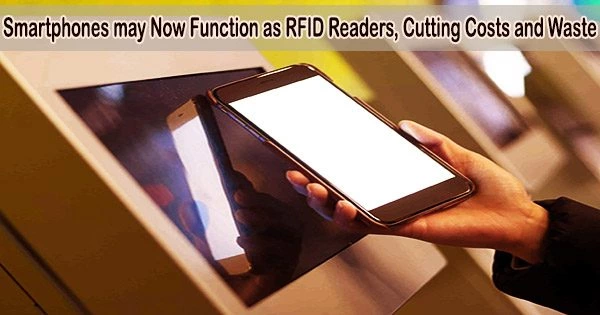Imagine being able to quickly determine whether things in your fridge are about to expire by opening an app on your phone and checking your fridge. This is only one of the uses for a novel technology created by scientists at the University of California, San Diego.
The system combines a phone software update with a chip that is built into product packaging. The phone becomes capable of identifying objects based on signals the chip emits from specific frequencies, in this case, Bluetooth or WiFi. In an industrial setting, a smartphone equipped with the software update could be used as an RFID reader.
The project makes use of advances in backscatter communication, which reroutes signals created by your smartphone in a way that your phone can interpret.
Effectively, this technique uses 1000 less power than state-of-the-art to generate WiFi signals. With the help of these developments, the Internet of Things and devices like WiFi or Bluetooth transceivers may now communicate using very little power for uses like on-body sensors or asset trackers.
The bespoke chip, which has a manufacturing cost of only a few pennies and is about the size of a sand grain, requires so little power that it can be totally fueled by LTE signals via a process known as RF energy harvesting. The chip turns Bluetooth transmissions into WiFi signals, which can in turn be detected by a smartphone with that specific software update.
This approach enables a robust, low-cost, and scalable way to provide power and enable communications in an RFID-like manner while using smartphones as the devices that both read and power the signals.
Patrick Mercier
The team will present their work at the IEEE International Solid-State Circuits Conference in San Francisco on Feb. 20, 2023.
Modern backscatter modulation requires two external devices: one for transmission and another for signal reception and reading. The first backscatter integrated circuit to support wireless communication and battery-free operation from a single mobile device is shown in this conference paper.
“This approach enables a robust, low-cost, and scalable way to provide power and enable communications in an RFID-like manner while using smartphones as the devices that both read and power the signals,” said Patrick Mercier, one of the paper’s senior authors and a professor in the Department of Electrical and Computer Engineering at the University of California San Diego.
“The technology’s broader promise is the development of devices that do not need batteries because they can harvest power from LTE signals instead. This, in turn, would lead to devices that are significantly less expensive, last longer, up to several decades,” said Dinesh Bharadia, a professor in the UC San Diego Department of Electrical and Computer Engineering and one of the paper’s senior authors.
“E-waste, especially batteries, is one of the biggest problems the planet is facing, after climate change,” Bharadia said.
How it works
By buffering electricity from LTE smartphone signals onto an energy storage capacitor, the researchers made this achievement. As a result, a receiver is set into motion and begins to detect Bluetooth signals, which are then transformed into reflected WiFi signals.
The software update is simply a bit sequence that turns the Bluetooth signal into something that can be more easily turned into a WiFi signal.
In addition, most lower power wireless communications require custom protocols, but the device the researchers developed relies on common communication protocols: Bluetooth, WiFi and LTE. That’s because smartphones are equipped with both a Bluetooth transmitter and a WiFi receiver.
The device has a range of one meter-about one yard. Adding a battery would boost the tag’s range to tens of meters, but also increase costs. The device, which is half a square inch in size, costs just a few cents to manufacture.
Next steps
The system will next be used in other research initiatives to show off its possibilities.
The team also wants to sell the device, either through a startup or a business associate.
The National Science Foundation under Grant 1923902 and the UC San Diego Center supported the work for Wearable Sensors.
An LTE-harvesting BLE-to-WiFi Backscattering Chip for Single-Device RFID-like Interrogation.





